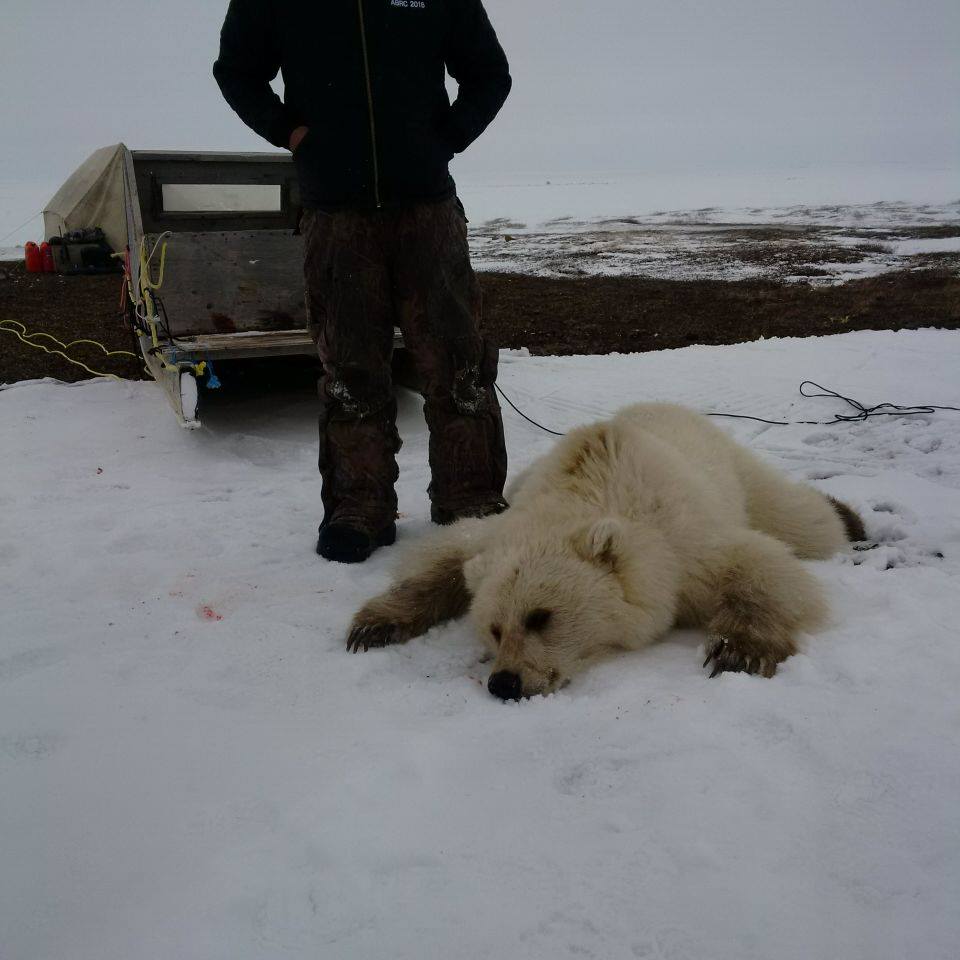In May about five years ago, a male grizzly bear woke from hibernation and headed east, toward the Nunavut shore of Hudson’s Bay. He was looking for food, new territory, and a female bear to mate with.

His environment was warming slowly – bad news for polar bears as pack ice shrinks, but good news for grizzlies, whose population is expanding along with their territory.
“We have very healthy populations with improving conditions. We’re probably getting more young dispersing males. They just pick a direction and go,” explains Andrew Derocher, a biology professor at the University of Alberta.
The bear reached the salt water shore. It’s more traditional territory for polar bears, but grizzlies are moving east from the Northwest Territories and western Nunavut.
“We’ve got these young males going out, but when they get to these new areas there are no female grizzly bears,” Derocher says. “If there were, they’d be mating with female grizzly bears. But they aren’t finding females to mate with, which means they tend to roam farther and farther.
“Some of them just happen to wander out on to the ice into polar bear habitat, and bump into breeding females.”
Grizzlies and polar bears can successfully reproduce with each other, but usually polar bears are out on the ice during their mating season, and grizzlies are just coming out of hibernation, so it has tended not to happen in nature.
In recent years, however, global warming is ending grizzlies’ hibernation a bit earlier than normal.

Get daily National news
As a harsh Arctic winter set in, the polar bear gave birth to a female cub that was a different colour from herself.
Hybrid bears, call them grolar bears or pizzlies, are “pretty blond across the back, sort of a dirty polar bear colour. Some of them take on almost a honey colour.”
Scientists have proposed calling the bears nanulak, from the Inuktitut words for polar bear and grizzly bear.
All of the examples known to science had a grizzly father and a polar bear mother, Derocher says. The hybrid bears are themselves able to breed.
Nine have been reported since 2006.
The bear was killed near Arviat, Nunavut, on the shore of Hudson’s Bay about 250 kilometres north of Churchill, Man.
Local hunter Didji Ishalook reported the kill on Facebook on May 15. Global News tried to contact him, but without success.
Aboriginal communities in Nunavut are given annual hunting quotas of polar bears, which they can divide up between subsistence hunting and non-aboriginal trophy hunters, who bring in revenue.
Self-defence kills are allowed, but count against a community’s quota.

Manitoba government documents show polar bear encounters on the shores of Hudson Bay have reached record levels.
It’s not clear whether the hybrids behave more like grizzlies or polar bears.
“We don’t really know how they’re living,” Derocher says.” You would think that if mom’s a polar bear, and she’s taught you how to hunt seals for two and a half years, you’d follow that pattern. The hybrids are not really adapted to either world. They’re not white, so they’re not camouflaged for hunting (on ice), and they’re not brown, so they’re not camouflaged for hunting on land.”
“They’re healthy, they’re growing, they’re thriving. So whatever it is they’re doing seems to be working for them.”
The hybrid bears may be a sign of bigger changes to come.
Two-thirds of Canada’s polar bears are expected to disappear by mid-century, with a remnant surviving in the high Arctic. In more southern areas, like mainland Nunavut, grizzlies may replace polar bears completely, with polar bears living on only as a genetic quirk of the local grizzlies.
“It’s possible that grizzly bears could take over the genetic material of polar bears. You wouldn’t see any difference in the grizzly bears, but a few of their genes would carry on.”


Comments